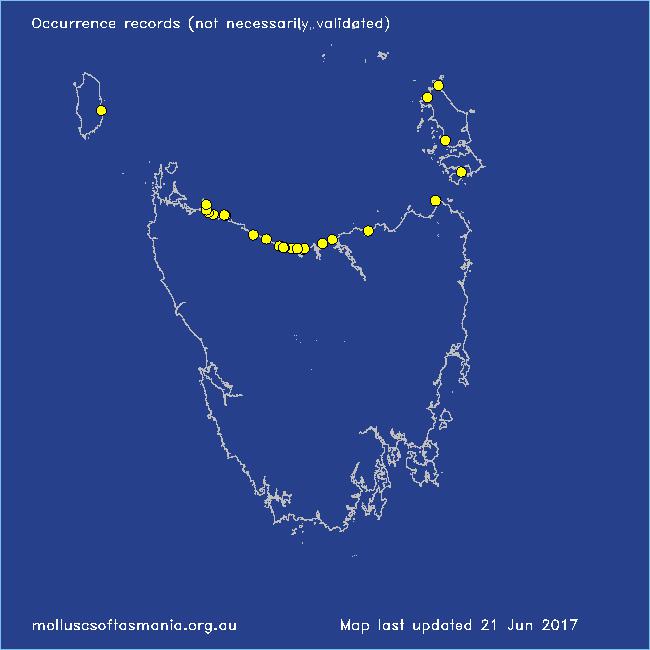
Clavagellidae: Humphreyia strangei (A. Adams, 1854) (‘Strange’s watering-pot’)
Synonym(s): strangei A. Adams, 1852 coxi Brazier, 1872.
Typical shell-length 150 mm. The animal occupies a calcareous, 10 mm wide, square-sided tube topped with a porous cap; tube-sections are occasionally beached. Lives subtidally in sand. Native. Endemic to southeastern and southwestern Australia (NSW, TAS, VIC, SA and WA). In Tasmanian waters, this species is confined to the N.
Classification
Class: Bivalvia
Subclass: Heterodonta
Order: Pholadomyoida
Superfamily: Clavagelloidea
Family: Penicillidae
Genus: Humphreyia
Localities for Humphreyia strangei
Black River Beach: northern end
Black River Beach: southern end
Burnie: Blythe Heads & estuary
Cape Portland (unlocalised)
Clarke Island: Kangaroo Bay to Seal Point
Devonport: Coles Beach
East Devonport: Pardoe Beach
East Devonport: Pardoe Point
East Ulverstone
Flinders Island: Fotheringate Bay
Flinders Island: Killiecrankie: foreshore
Flinders Island: Northeast River: mouth
Goat Island: foreshore of island and nearby mainland
Greens Beach: main beach
King Island: Naracoopa: foreshore
Leith: Lillico Beach
Narawntapu: Little Badger Head
North West coast of Tasmania (unlocalised)
Pipers Head
Port Latta: Cowrie Point
Rocky Cape: Burgess Cove
Rocky Cape: foreshore N of Picnic Beach
Rocky Cape: Mary Anne Cove area
Somerset: foreshore
Tasmania (unlocalised)
Ulverstone (unlocalised)




